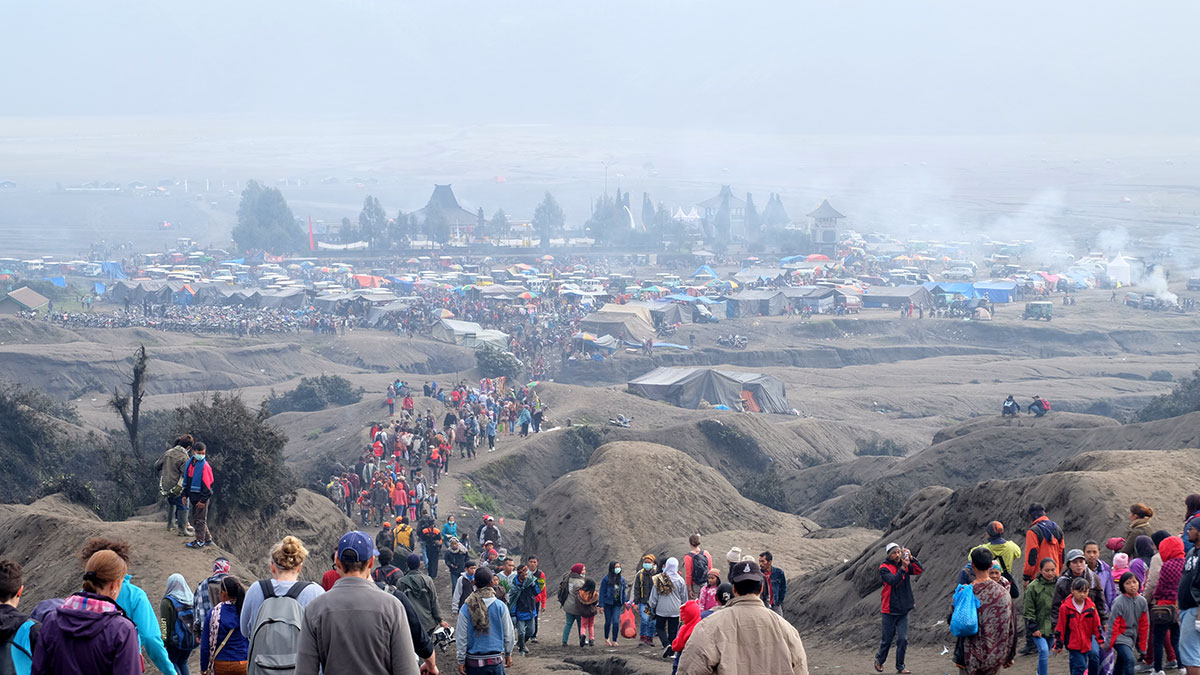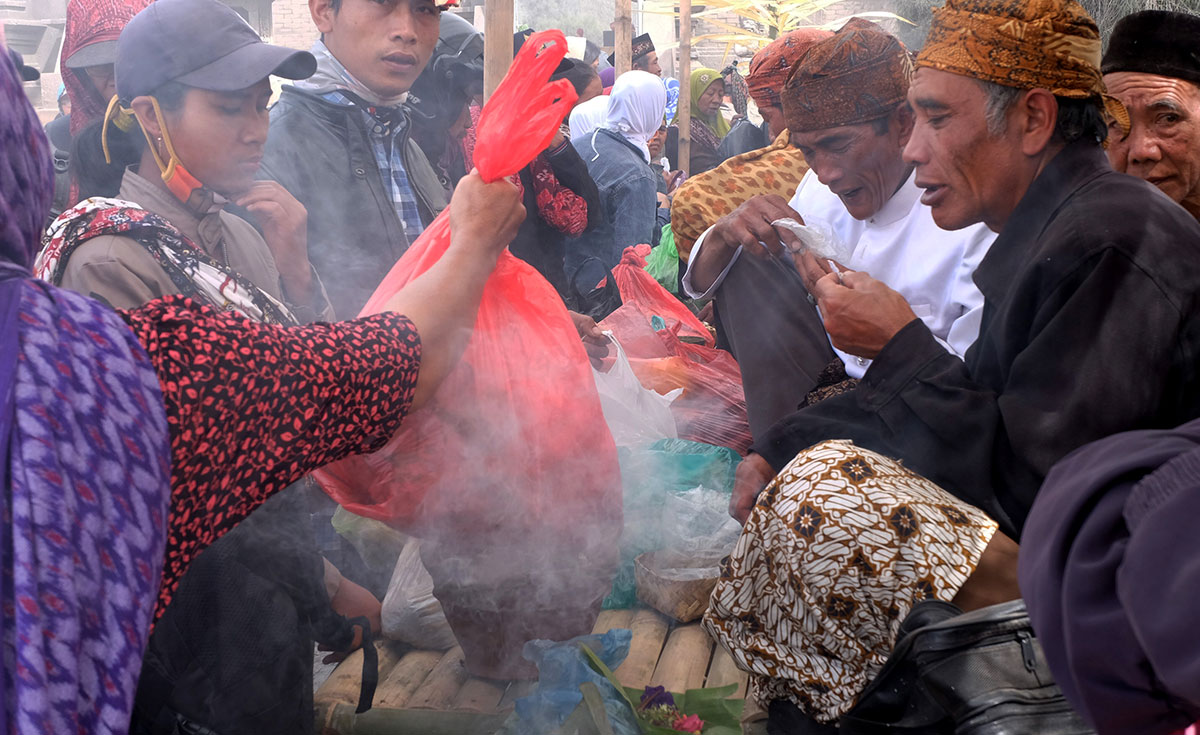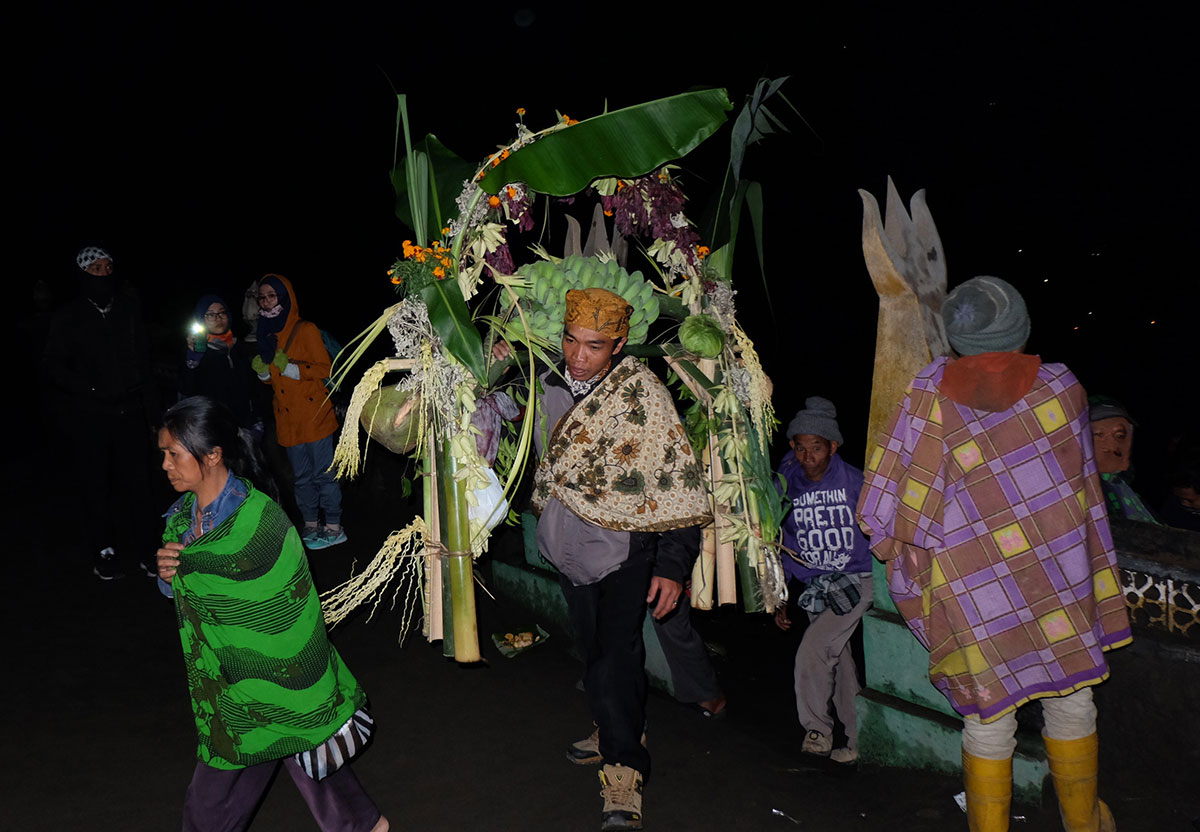An erupting volcano has not prevented Tenggerese people from performing their annual ceremony, which involves climbing to the rim of Mount Bromo’s crater and delivering offerings like goats, chicken, and vegetables to the Hindu Gods.
The ceremony dates back to the 15th century when a childless couple – ancestors of the Tenggerese – prayed to God to be given children. God gave them 25 children, and in return, they sacrificed the youngest. Since then, once a year during a full moon, the Tenggerese hold what is called the Kasada Ceremony to honor the sacrifice of the youngest son of their ancestors.
This year, however, Mount Bromo is erupting and the government has warned religious Hindus to stay at least 1 kilometre from the crater. Only 20 priests are allowed to go up to the crater to throw offerings. The warning has been completely ignored.
The Tenggerese people believe the mountain will not harm them. But if they do not perform the ceremony, they fear bad things will fall upon them, such as a failed harvest, a pandemic, or even worse. So, starting in the dark, they walked up the steep slope of the erupting volcano, to stand on the rim of the crater and give their offerings.

A night before the ceremony, Tenggerese children parade around the village carrying torches. [Syarina Hasibuan/Al Jazeera]

A morning view of erupting Mount Bromo.[Syarina Hasibuan/Al Jazeera]

A man prays in a temple infront of mount Bromo. [Syarina Hasibuan/Al Jazeera]

People gather at the foot of Mount Bromo on the day of the ceremony. On the background is the main temple for Tengger People. [Syarina Hasibuan/Al Jazeera]

Tenggerese priests give their blessings to people’s offering before they are taken up Mount Bromo and thrown into the crater.[Syarina Hasibuan/Al Jazeera]

Priests pray on the night of the Kasada ceremony, repeating the story about their ancestors before taking offerings to the mountain. [Syarina Hasibuan/Al Jazeera]
Priests pray on the night of the Kasada ceremony, repeating the story about their ancestors before taking offerings to the mountain. [Syarina Hasibuan/Al Jazeera]

A woman wearing a mask along the smokey caldera rim. Volcanic ash rises behind her from the crater. [Syarina Hasibuan/Al Jazeera]

A man carries his offering stops takes a pause as the group worries about the eruption. [Syarina Hasibuan/Al Jazeera]

Inside the crater some Tenggerese getting ready with tarps to catch the offerings. This dangerous action is also part of the tradition. Money, animals or food thrown in then taken by these people.[Syarina Hasibuan/Al Jazeera]

The main offering is brought up to the crater. [Syarina Hasibuan/Al Jazeera]

Tenggerese will build a fire to warm up while the Kasada ceremony taking place the whole night in a cold mountain weather.[Syarina Hasibuan/Al Jazeera]

A young man prepares to throw his offering into the crater. Volcanic ash covers his jacket and his head band. [Syarina Hasibuan/Al Jazeera]

Men carry goats up the mountain for offering. [Syarina Hasibuan/Al Jazeera]
























